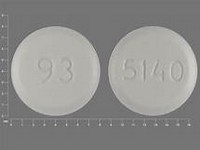Alendronic acid
CLINICAL USE
Treatment and prophylaxis of osteoporosis
DOSE IN NORMAL RENAL FUNCTION
5–10 mg daily or 70 mg once weekly
PHARMACOKINETICS
249.1 (325.1 as
sodium salt)
78
Approx 50
28 litres
>10 years/Increased
DOSE IN RENAL IMPAIRMENT
GFR (mL/MIN)
35–50 Dose as in normal renal function
<35
Avoid. See ‘Other Information’
DOSE IN PATIENTS UNDERGOING RENAL REPLACEMENT THERAPIES
Unlikely to be dialysed. Dose as in
GFR<35 mL/min
Not dialysed. Dose as in
GFR<35 mL/min
Unknown dialysability. Dose as in
GFR<35 mL/min
Unlikely to be dialysed. Dose as in
GFR<35 mL/min
IMPORTANT DRUG INTERACTIONS
Potentially hazardous interactions with other drugs
Calcium salts: reduced absorption of
alendronate
ADMINISTRATION
Reconstition
–
Route
Oral
Rate of Administration
–
Comments
–
OTHER INFORMATION
breakfast and any other oral medication
of secondary hyperparathyroidism in
haemodialysis patients, has been used
at a dose of 10 mg alendronate plus IV
calcitriol 2 mcg post dialysis to reduce
PTH levels. (McCarthy JT, Kao PC,
Demick DS, et al. Combination therapy
with alendronate and intravenous
calcitriol for the treatment of secondary
hyperparathyroidism in hemodialysis
patients. J Am Soc Nephrol. 1999; 10
Program, 81A–82A.)
Manufacturers do not recommend use of
alendronate in severe renal impairment
due to lack of data
recommended dose may be possible
in ESRD, but more trials are required
and osteomalacia and adynamic bone
disease must first be excluded. (Miller
PD. Treatment of osteoporosis in chronic
kidney disease and end-stage renal disease.
Curr Osteoporos Rep. 2005; 3: 5–12.)
preparations in patients with CKD 3, 4 and
5 to good effect
